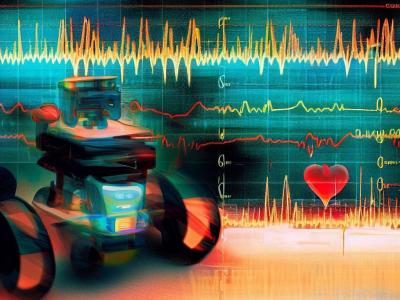ECG
The large number and scale of natural and man-made disasters have led to an urgent demand for technologies that enhance the safety and efficiency of search and rescue teams. Semi-autonomous rescue robots are beneficial, especially when searching inaccessible terrains, or dangerous environments, such as collapsed infrastructures. For search and rescue missions in degraded visual conditions or non-line of sight scenarios, radar-based approaches may contribute to acquire valuable, and otherwise unavailable information.
- Categories:
 1931 Views
1931 Views
This is a MATLAB-based tool to convert electrocardiography (ECG) waveforms from paper-based ECG records into digitized ECG signals that is vendor-agnostic. The tool is packaged as an open-source standalone graphical user interface (GUI) based application. This open-source digitization tool can be used to digitize paper ECG records thereby enabling new prediction
algorithms.
- Categories:
 876 Views
876 ViewsThis is the dataset associated with the IEEE-JBHI submission "Synthesizing Electrocardiograms With Atrial Fibrillation Characteristics Using Generative Adversarial Networks". This dataset contains 4,768 synthesized atrial fibrillation (AF)-like ECG signals stored in PhysioNet MAT/HEA format.
- Categories:
 819 Views
819 Views
For more information please take a look at the corresponding paper (DOI: 10.1109/JBHI.2019.2963786)
- Categories:
 310 Views
310 Views
This dataset provides the ECG signals recorded in ambulatory (moving) conditions of subjects. The ambulatory ECG (A-ECG) data acquired with two different recorders viz. Biopac MP36 Acquisition system and a self-developed wearable ECG recorder are made available. Total 10 subjects' (with avg. age of 27 years, 1 female and 9 males) ECG signals with four body movements- Left & Right arm up/down, Sitting down & standing up and Waist twist are uploaded.
An EEG signals dataset is also provided here.
- Categories:
 1809 Views
1809 ViewsFor research purposes, the ECG signals were obtained from the PhysioNet service (http://www.physionet.org) from the MIT-BIH Arrhythmia database. The created database with ECG signals is described below. 1) The ECG signals were from 29 patients: 15 female (age: 23-89) and 14 male (age: 32-89). 2) The ECG signals contained 17 classes: normal sinus rhythm, pacemaker rhythm, and 15 types of cardiac dysfunctions (for each of which at least 10 signal fragments were collected).
- Categories:
 9670 Views
9670 Views

